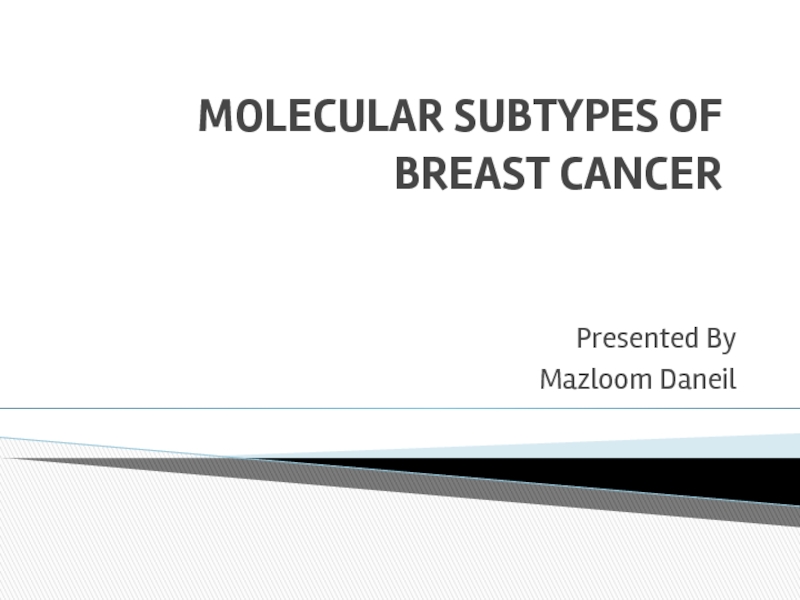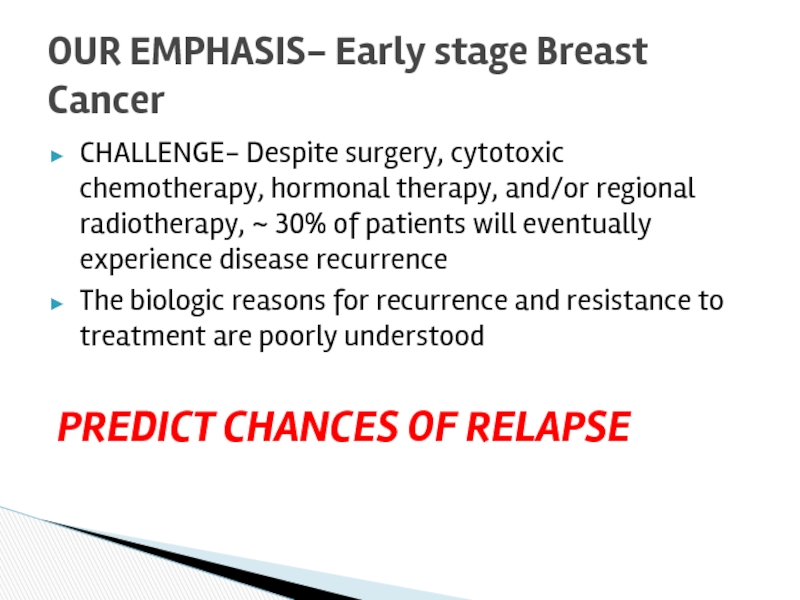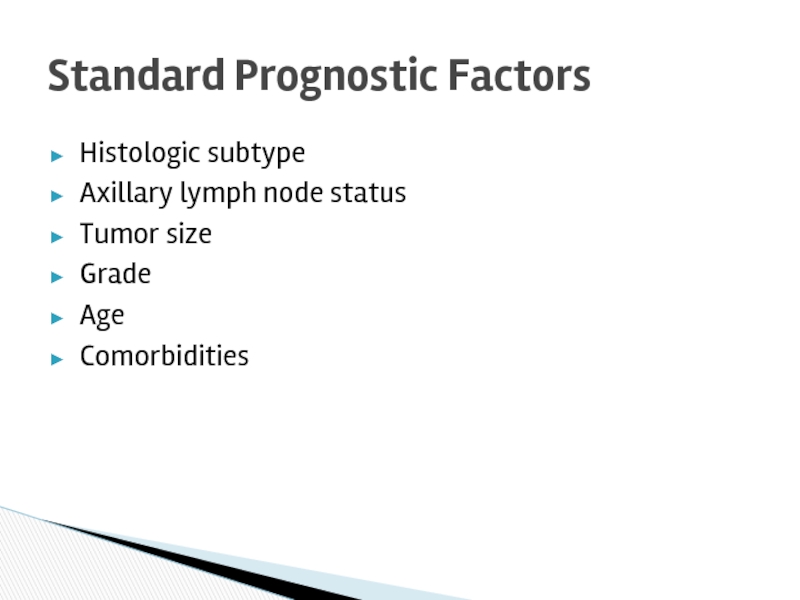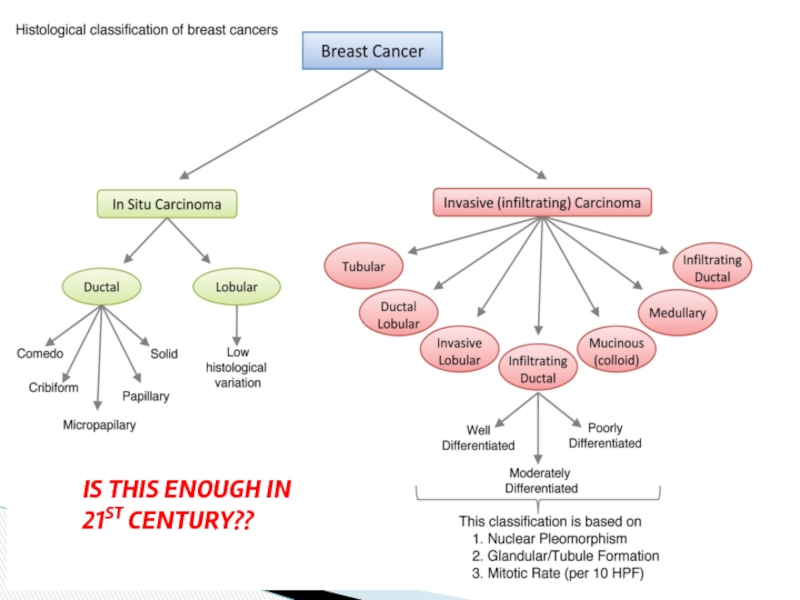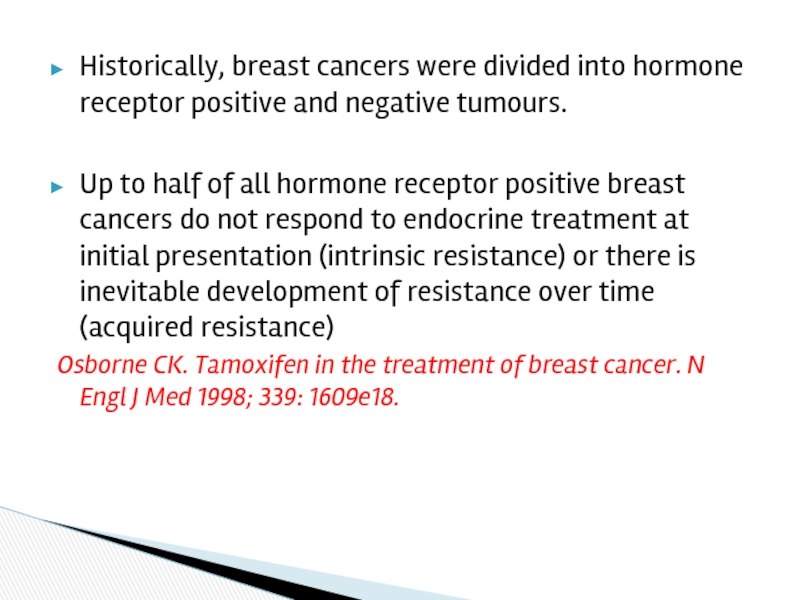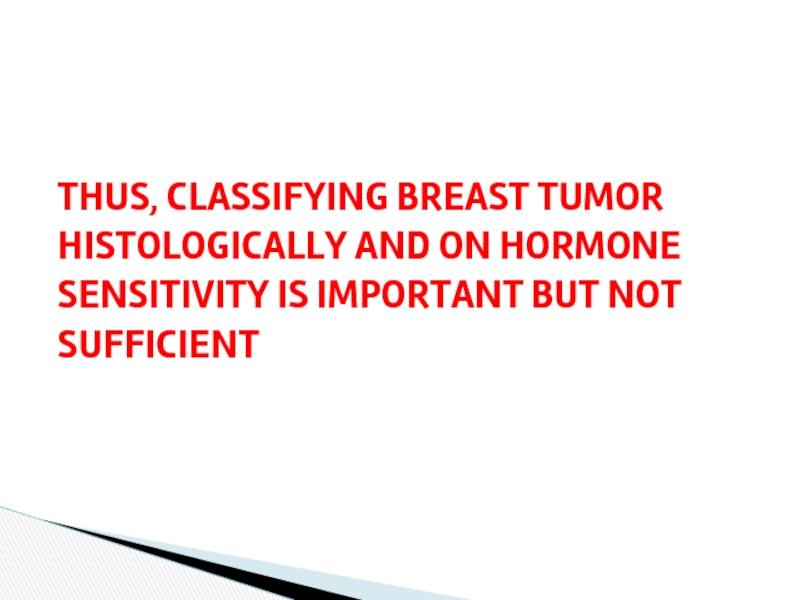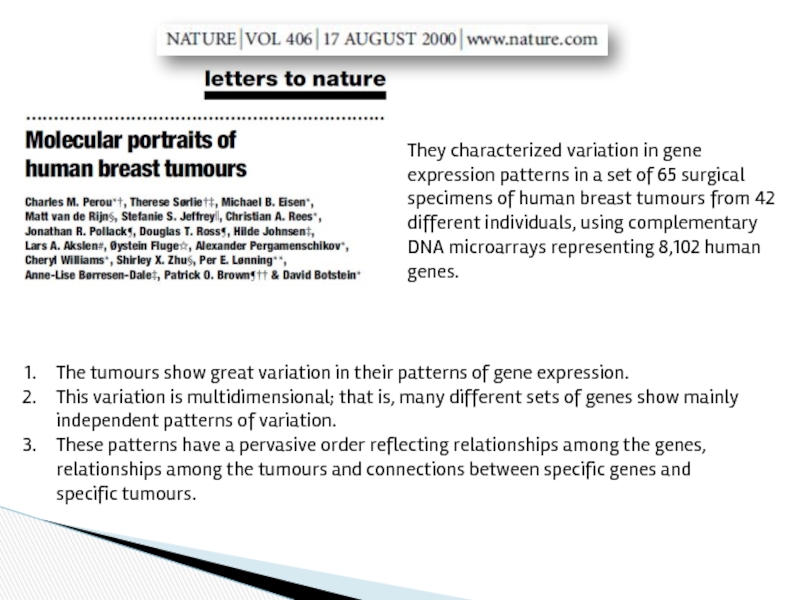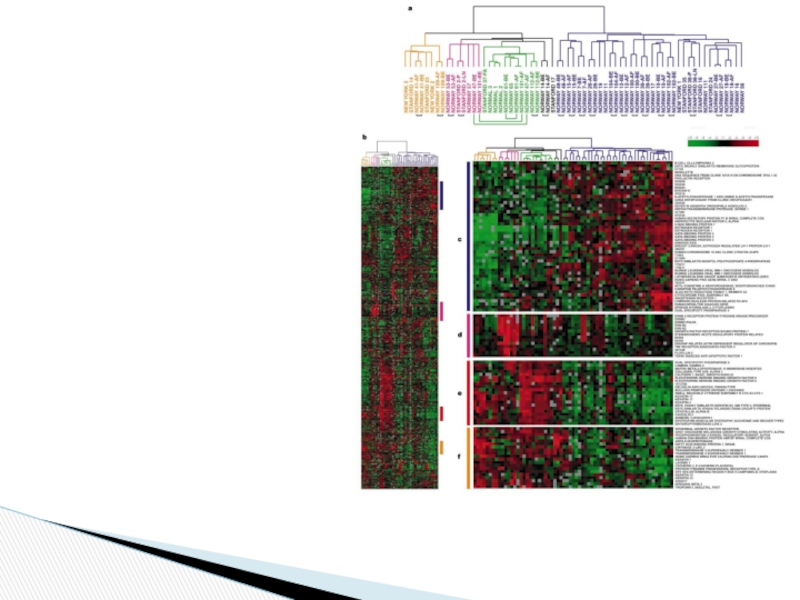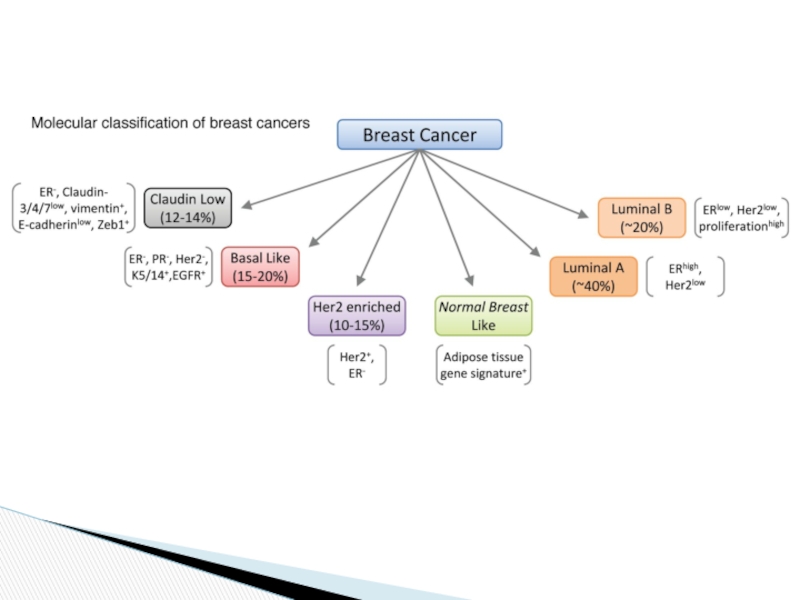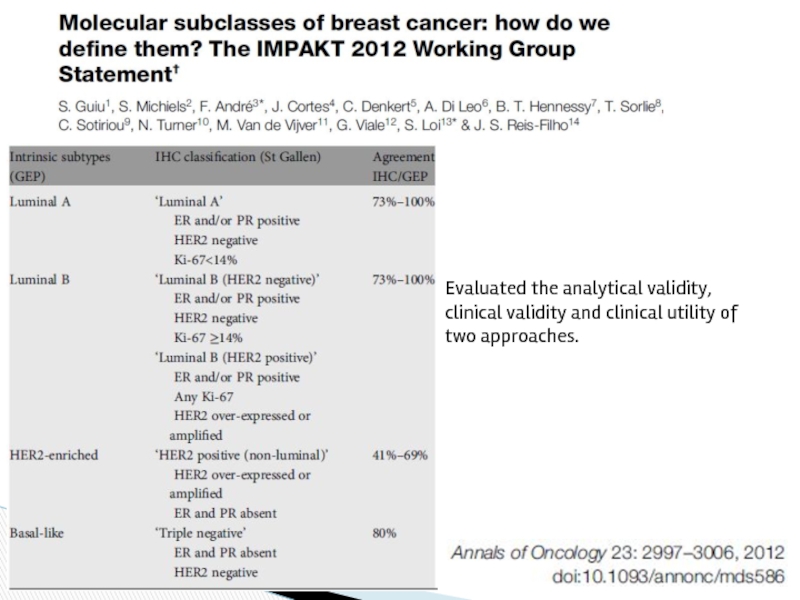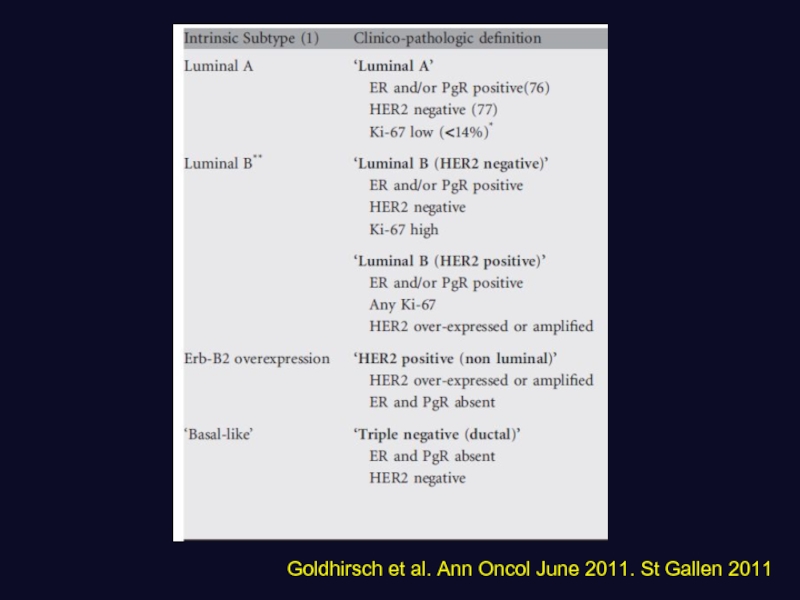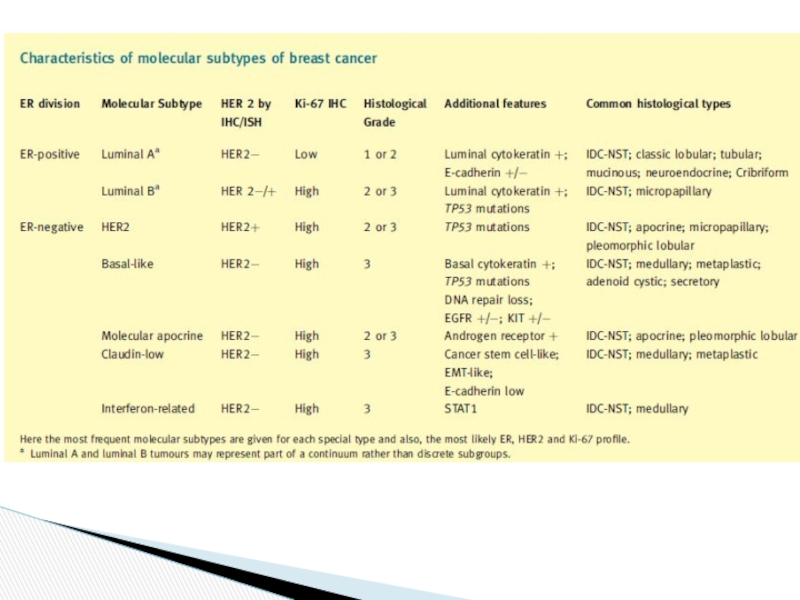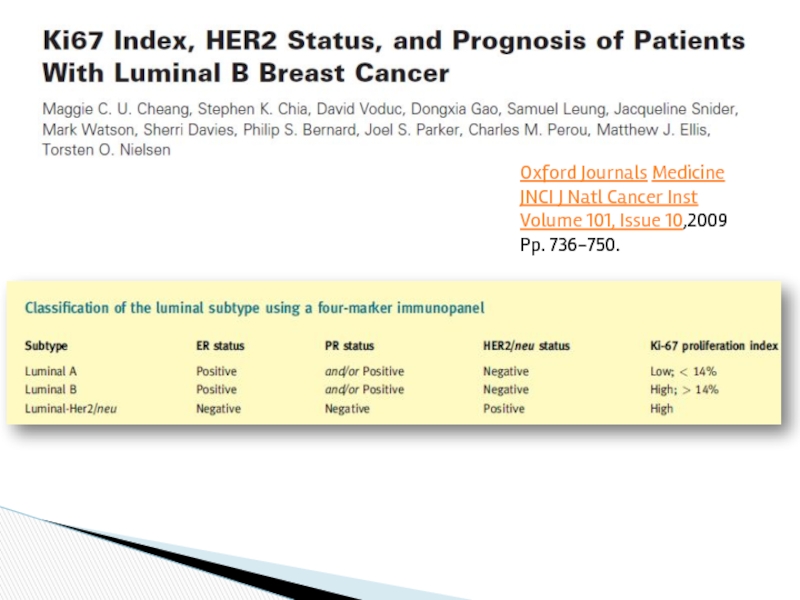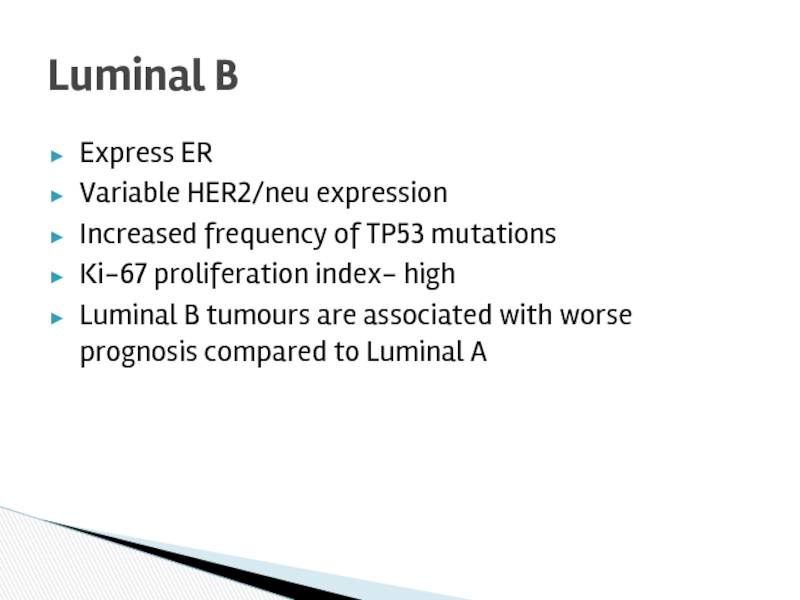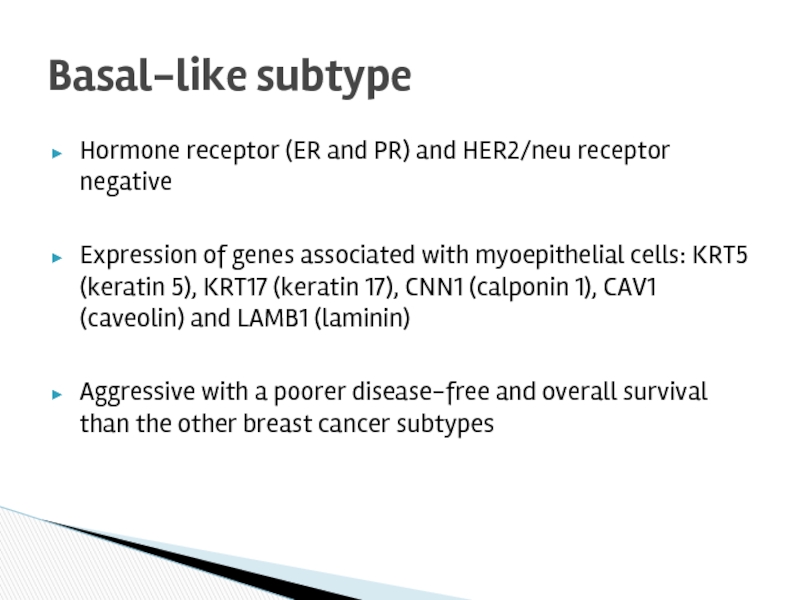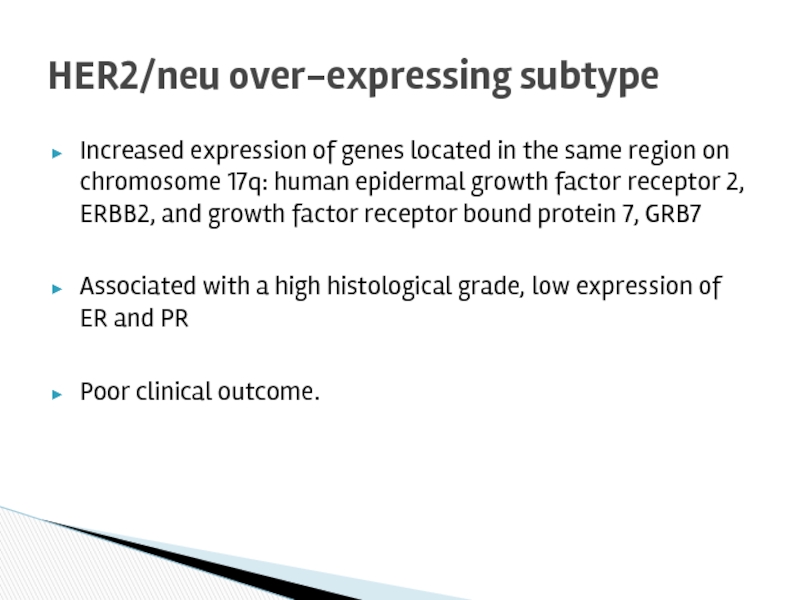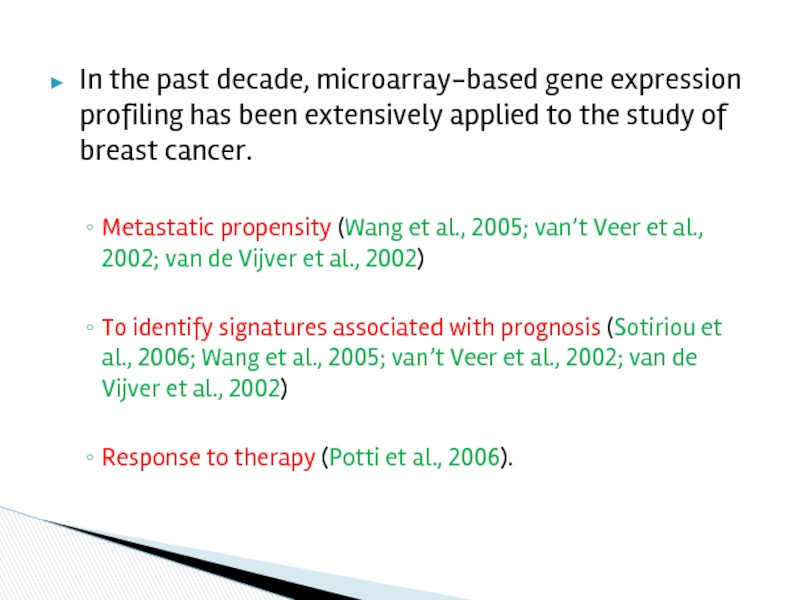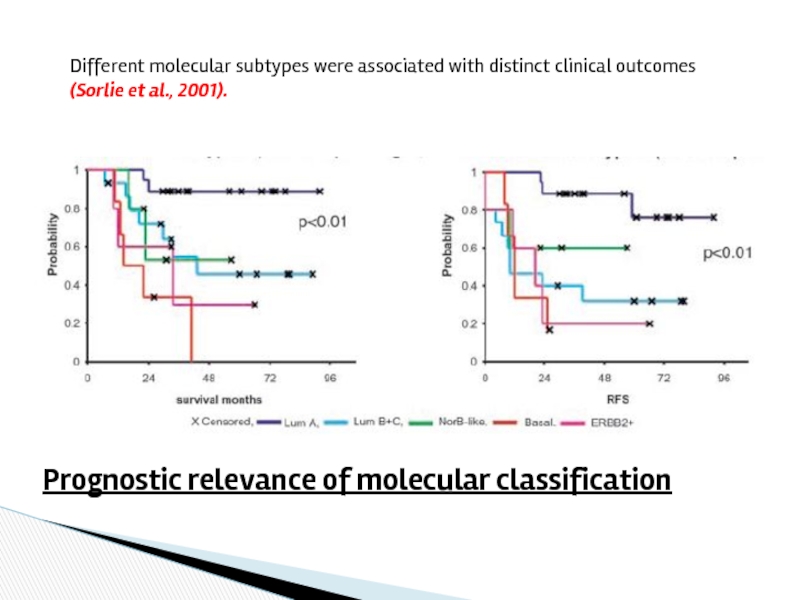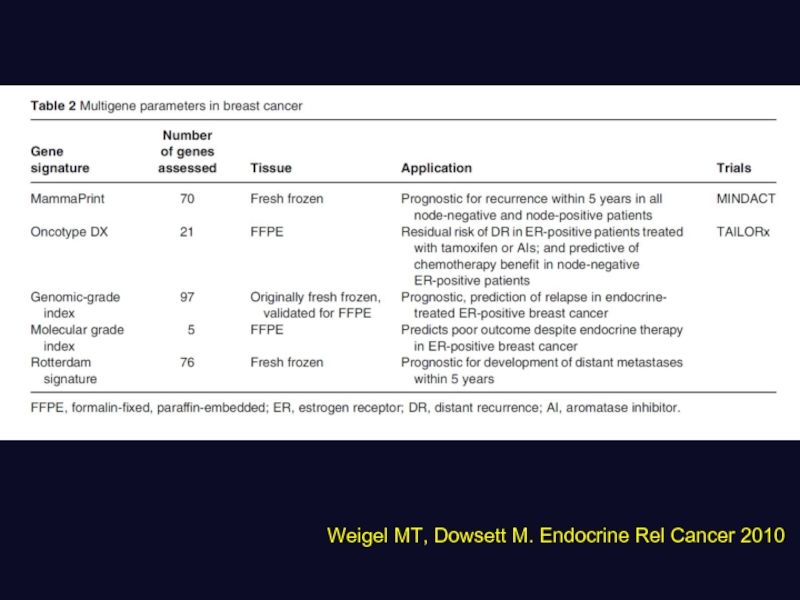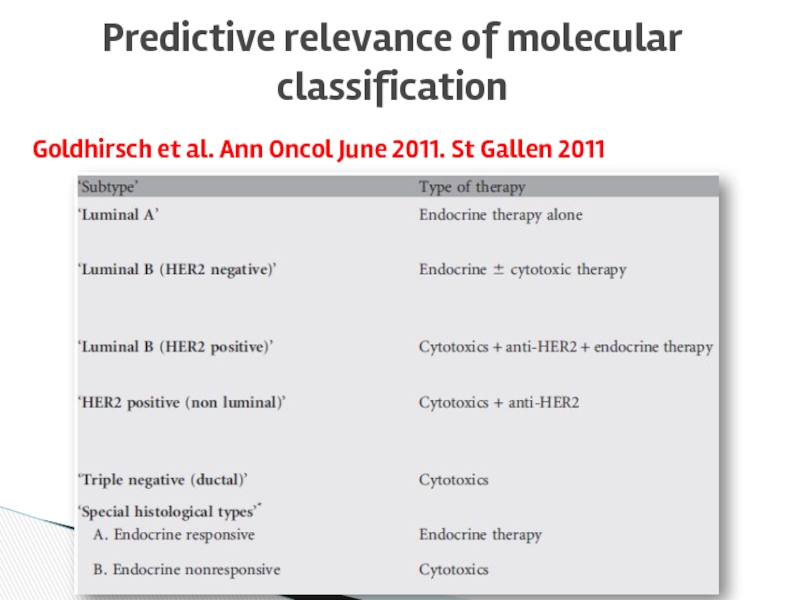- Главная
- Разное
- Дизайн
- Бизнес и предпринимательство
- Аналитика
- Образование
- Развлечения
- Красота и здоровье
- Финансы
- Государство
- Путешествия
- Спорт
- Недвижимость
- Армия
- Графика
- Культурология
- Еда и кулинария
- Лингвистика
- Английский язык
- Астрономия
- Алгебра
- Биология
- География
- Детские презентации
- Информатика
- История
- Литература
- Маркетинг
- Математика
- Медицина
- Менеджмент
- Музыка
- МХК
- Немецкий язык
- ОБЖ
- Обществознание
- Окружающий мир
- Педагогика
- Русский язык
- Технология
- Физика
- Философия
- Химия
- Шаблоны, картинки для презентаций
- Экология
- Экономика
- Юриспруденция
Molecular subtypes of breast cancer презентация
Содержание
- 1. Molecular subtypes of breast cancer
- 2. Why molecular subtypes need to be characterized
- 3. CHALLENGE- Despite surgery, cytotoxic chemotherapy, hormonal therapy,
- 4. Histologic subtype Axillary lymph node status Tumor size Grade Age Comorbidities Standard Prognostic Factors
- 5. IS THIS ENOUGH IN 21ST CENTURY??
- 6. Historically, breast cancers were divided into hormone
- 7. THUS, CLASSIFYING BREAST TUMOR HISTOLOGICALLY AND ON HORMONE SENSITIVITY IS IMPORTANT BUT NOT SUFFICIENT
- 8. They characterized variation in gene expression patterns
- 11. Evaluated the analytical validity, clinical validity and clinical utility of two approaches.
- 12. Goldhirsch et al. Ann Oncol June 2011. St Gallen 2011
- 14. Oxford Journals Medicine JNCI J Natl Cancer Inst Volume 101, Issue 10,2009 Pp. 736-750.
- 15. Express ER Most common. Luminal A possess
- 16. Express ER Variable HER2/neu expression Increased frequency
- 17. Hormone receptor (ER and PR) and HER2/neu
- 18. Increased expression of genes located in the
- 19. In the past decade, microarray-based gene expression
- 20. Different molecular subtypes were associated with distinct
- 21. Weigel MT, Dowsett M. Endocrine Rel Cancer 2010
- 22. Predictive relevance of molecular classification Goldhirsch et al. Ann Oncol June 2011. St Gallen 2011
- 23. Thank You
Слайд 2Why molecular subtypes need to be characterized ?
How is molecular characterization
What is the molecular classification ?
Prognostic relevance of molecular classification ?
Predictive relevance of molecular classification ?
Слайд 3CHALLENGE- Despite surgery, cytotoxic chemotherapy, hormonal therapy, and/or regional radiotherapy, ~
The biologic reasons for recurrence and resistance to treatment are poorly understood
PREDICT CHANCES OF RELAPSE
OUR EMPHASIS- Early stage Breast Cancer
Слайд 4Histologic subtype
Axillary lymph node status
Tumor size
Grade
Age
Comorbidities
Standard Prognostic Factors
Слайд 6Historically, breast cancers were divided into hormone receptor positive and negative
Up to half of all hormone receptor positive breast cancers do not respond to endocrine treatment at initial presentation (intrinsic resistance) or there is inevitable development of resistance over time (acquired resistance)
Osborne CK. Tamoxifen in the treatment of breast cancer. N Engl J Med 1998; 339: 1609e18.
Слайд 7THUS, CLASSIFYING BREAST TUMOR HISTOLOGICALLY AND ON HORMONE SENSITIVITY IS IMPORTANT
Слайд 8They characterized variation in gene expression patterns in a set of
genes.
The tumours show great variation in their patterns of gene expression.
This variation is multidimensional; that is, many different sets of genes show mainly independent patterns of variation.
These patterns have a pervasive order reflecting relationships among the genes, relationships among the tumours and connections between specific genes and specific tumours.
Слайд 11Evaluated the analytical validity, clinical validity and clinical utility of two
Слайд 15Express ER
Most common.
Luminal A possess a higher expression of the ER
Do not express HER2/neu
Ki-67 proliferation index- low
Luminal A tumours are associated with a better prognosis
Luminal A
Слайд 16Express ER
Variable HER2/neu expression
Increased frequency of TP53 mutations
Ki-67 proliferation index- high
Luminal
Luminal B
Слайд 17Hormone receptor (ER and PR) and HER2/neu receptor negative
Expression of genes
Aggressive with a poorer disease-free and overall survival than the other breast cancer subtypes
Basal-like subtype
Слайд 18Increased expression of genes located in the same region on chromosome
Associated with a high histological grade, low expression of ER and PR
Poor clinical outcome.
HER2/neu over-expressing subtype
Слайд 19In the past decade, microarray-based gene expression profiling has been extensively
Metastatic propensity (Wang et al., 2005; van’t Veer et al., 2002; van de Vijver et al., 2002)
To identify signatures associated with prognosis (Sotiriou et al., 2006; Wang et al., 2005; van’t Veer et al., 2002; van de Vijver et al., 2002)
Response to therapy (Potti et al., 2006).
Слайд 20Different molecular subtypes were associated with distinct clinical outcomes (Sorlie et
Prognostic relevance of molecular classification
